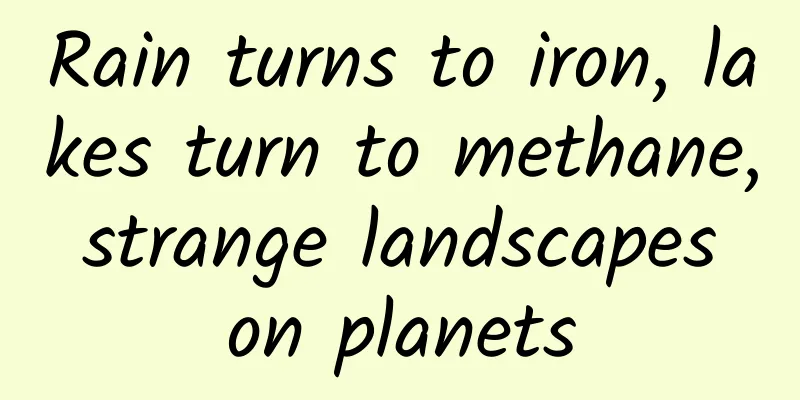The big pit "made by the stars" hides unknown historical mysteries

|
Canada's famous Manigault crater In the long history of 4.5 billion years, the Earth has suffered hundreds of violent impacts from large asteroids, which have left deep "scars" on the Earth that are still clearly visible today, with a total of at least 190. However, not all space rocks that enter the Earth's atmosphere can reach the ground. So, what kind of asteroids can leave traces of impact on Earth? And what kind of impact events can produce huge craters? First of all, we need to understand that most space rocks that enter the Earth's atmosphere are not actually very large, and their diameter is often only about 1 meter. This is undoubtedly good news for creatures on Earth, because space rocks with a diameter of less than 25 meters will usually burn in the air due to the heat generated by ultra-high-speed friction when passing through the Earth's atmosphere. When the remaining space rocks reach the ground after burning, they rarely cause substantial damage to the ground. Most of the time, Earth's atmosphere protects us from impacts with space rocks, but sometimes there are exceptions. Take the meteorite incident that occurred in Chelyabinsk, Russia in 2013 as an example. A meteorite with a diameter of 17 meters exploded in the air. Although the shock wave shattered the windows of residents' houses and injured some residents, it did not form a crater on the ground because the meteorite decomposed into dust and tiny fragments after entering the atmosphere. However, according to a research report released at the 45th Lunar and Planetary Science Conference in 2014, scientists found a meteorite with a diameter of 1.5 meters and some small fragments at the bottom of a lake near the damaged residential area of Chelyabinsk. In February 2013, a 17-meter-diameter meteorite exploded over Chelyabinsk, Russia. However, the 190 known impact craters on the Earth's surface indicate that some larger asteroids have successfully made it through the atmosphere and hit the ground in history. Although such events are relatively rare, they are extremely destructive. According to the Earth Impact Database, most of them landed in North America (32%), followed by Europe (22%) and Russia and Asia (16%). Of the known impact craters on Earth, 44 are larger than 20 kilometers in diameter. The following are the three largest land or water craters ever discovered: Vredefort crater Located in South Africa, it is the largest crater on Earth, with a diameter of 160 kilometers. It may have been formed by the impact of an asteroid with a diameter of 10-15 kilometers 2 billion years ago. A planet larger than 1 kilometer will have a global impact. The catastrophic extent of this impact may be comparable to the asteroid impact that caused the extinction of the dinosaurs, but it visited the Earth before the dinosaur era. Chicxulub crater Located on the Yucatan Peninsula in Mexico, with a diameter of 180 kilometers, it was formed by the impact of an asteroid with a diameter of 12 kilometers 66 million years ago. Although the crater is now partially on land, at the time of the impact, Yucatan was under a shallow sea. The impact caused the extinction of 75% of the Earth's species, including non-avian dinosaurs. The impact also triggered a dust cloud that lasted for many years to cover the Earth, blocking the sunlight and seriously interfering with the normal operation of the food chain. Those individuals among non-avian dinosaurs who were lucky enough to escape the initial impact disaster may subsequently face the threat of starvation. Sudbury crater The Sudbury Basin in Ontario, Canada, is one of the oldest known impact craters on Earth and the third largest in area. It was formed about 1.8 billion years ago. The impacting object may have been a giant comet or a mixture of asteroid fragments and rocks. Although erosion has made the crater difficult to identify, the nickel and iron mining industry in the area is booming. Scientists point out that what people are currently mining is essentially the material left after the asteroid impact. In addition, the Earth Impact Database shows that of the 44 largest craters formed by space rock impacts, 39 were formed more than 10 million years ago. The Karakul crater in Tajikistan is an exception, which was formed about 5 million years ago. "Many of the larger asteroids are very old and date back to the early days of the solar system, when space debris was flying around and collisions were frequent," Chodas said. "If we look at the craters all over the moon, we can imagine that if the Earth didn't have an atmosphere and oceans and erosion, it would probably be cratered like the moon. So we believe that there may have been more and even larger asteroid impacts in Earth's history, but we haven't found any traces of them yet." Reference Links: https://www.livescience.com/largest-asteroids-to-hit-earth Compiled by: Youyou Planning: Zhang Chao, Li Peiyuan, Yang Liu Reviewer: Liu Yong, Researcher at the National Space Science Center of the Chinese Academy of Sciences, Ambassador of China's Space Science Popularization |
>>: @Spacecraft: Watch out! Earth lightning and space "killer electron rain"
Recommend
The efficacy and function of water amaranth [picture]
The medical value of water amaranth [picture] is ...
The efficacy and function of American ginseng
Medicine is the best choice for treating diseases...
What are the effects, functions and contraindications of Trichosanthes kirilowii
The medicinal value of Trichosanthes seeds lies i...
What are the benefits of drinking senna leaves in water?
Drinking senna leaves soaked in water actually ha...
Can Astragalus be taken frequently?
Astragalus can be said to be a medicinal material...
The efficacy and function of dog tongue grass root
I believe many people are familiar with the Chine...
How does a flower get from the fields to the hands of a lover? 520 Uncovering a magical journey
Young people often use any special day to express...
The reason I advise you to eat more fresh walnuts, just one is enough!
Recently, I am really envious of people from Shaa...
The efficacy and function of Eucommia ulmoides
Eucommia ulmoides and Morinda officinalis are a m...
How to cook American ginseng
If we want to make our body healthier, we must pa...
Constipation for more than ten years, cured by a "magic medicine"
A 33-year-old woman had been suffering from const...
The efficacy and function of horseshoe
There are so many medicinal herbs in the world, a...
Can anyone help me see if this bowl is red bean soup or mung bean soup?
The answer is: mung bean soup! Mung bean soup, kn...
Alexa: Ranking of Chinese online travel companies by website traffic and user coverage at the end of 2012
According to the data from Alexa.cn, a world-reno...
The ocean is an excellent "carbon capturer"! Come and learn about marine carbon sinks and help achieve the "dual carbon" goals!
All known life on Earth is based on carbon as org...









